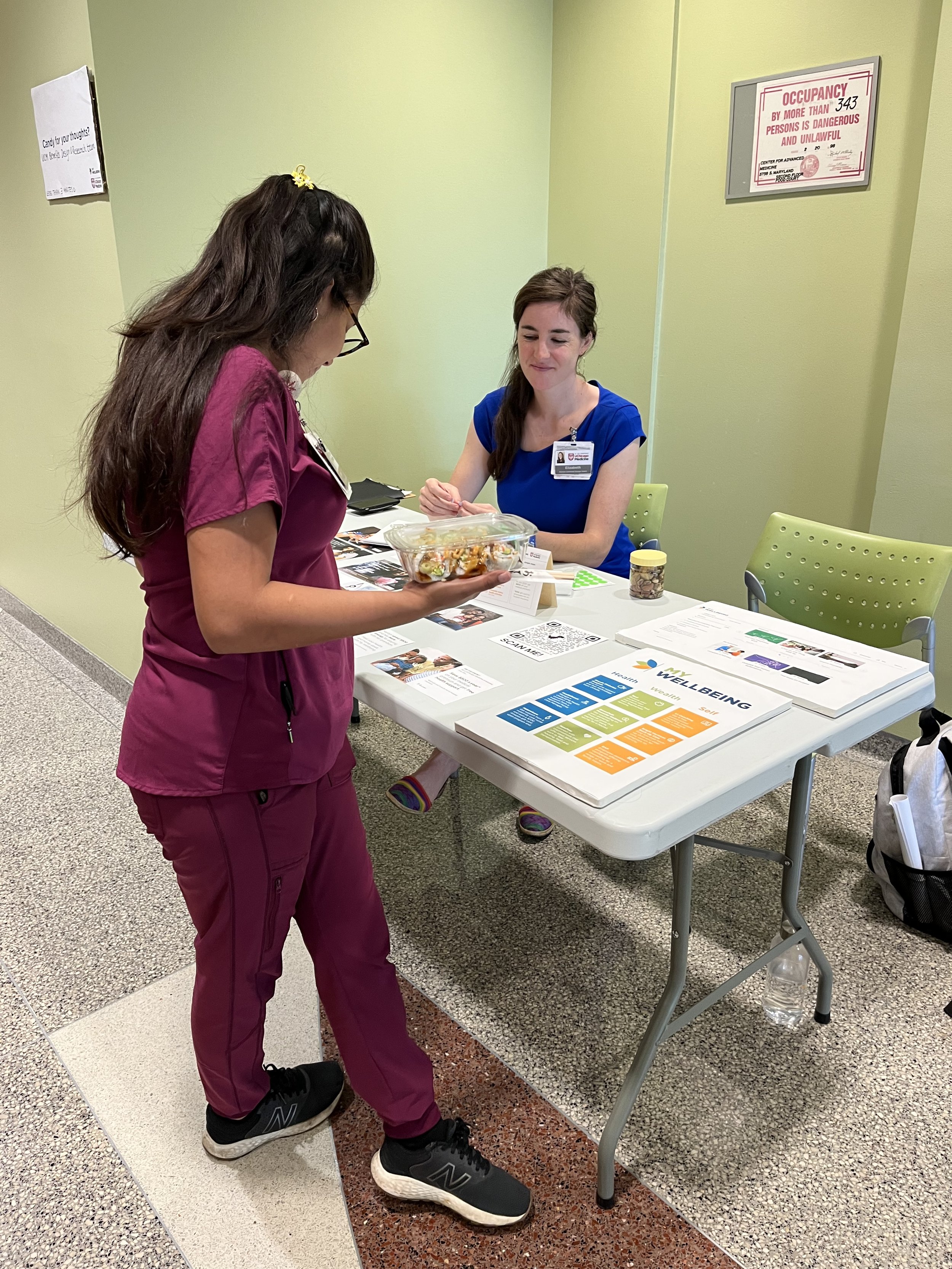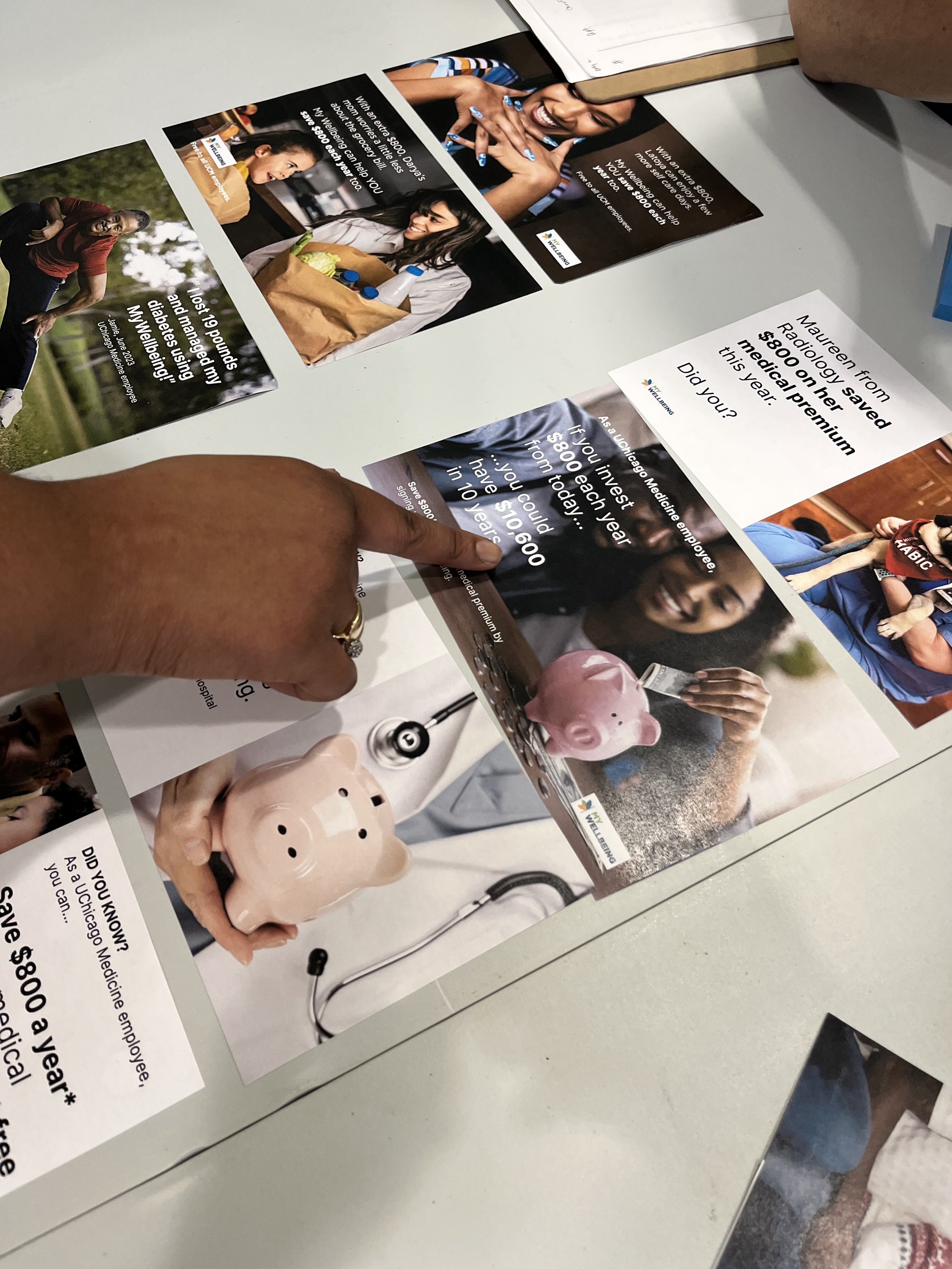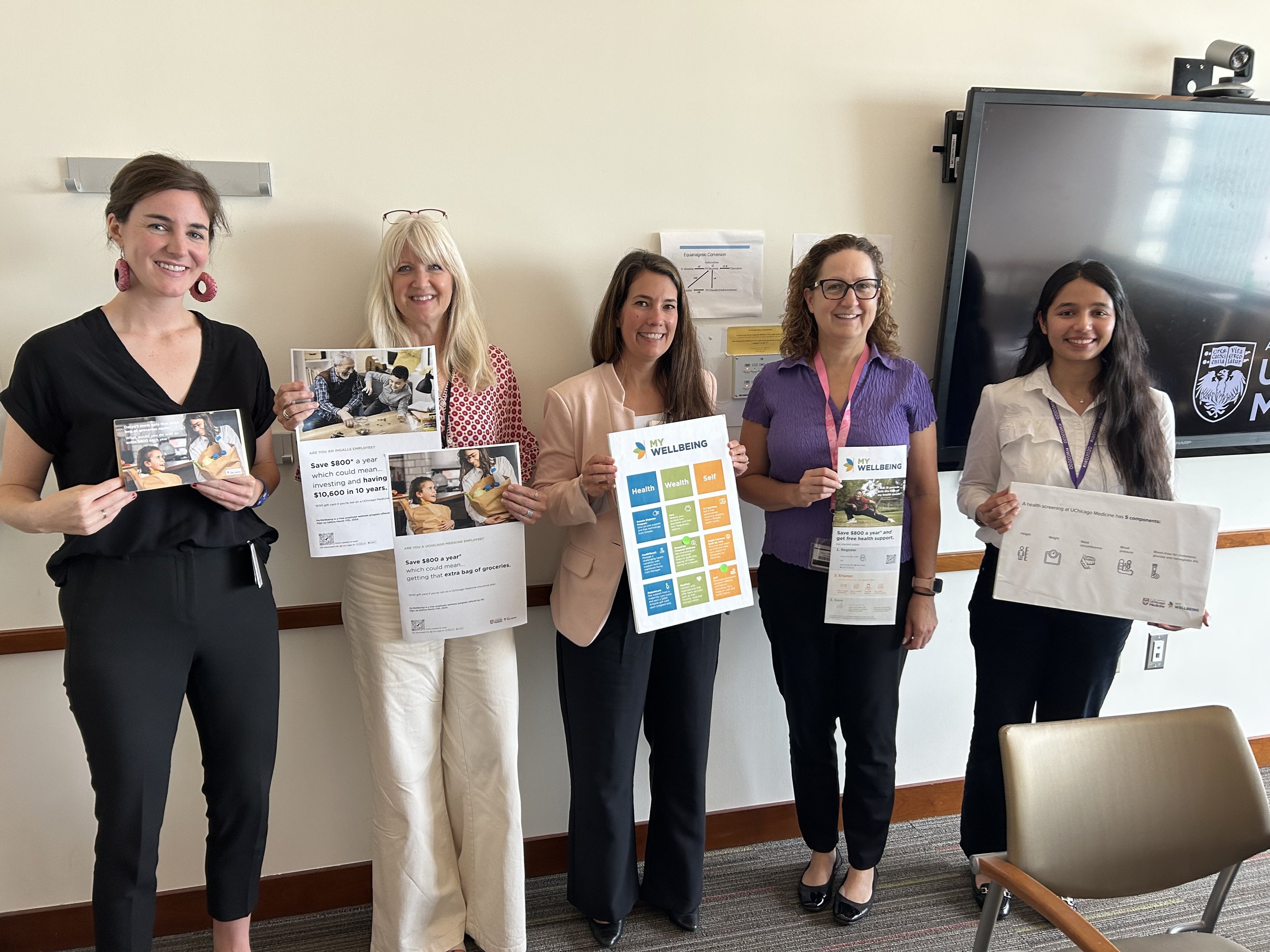How might a hospital HR department increase participation in an employee wellness program?
The Challenge
How might we develop a communication and outreach strategy for the HR team that will increase participation in an employee wellness program?
The Solution
A communication strategy toolkit involving tested outreach tools, ideal state journey maps and a 12-month pilot roadmap.
The Impact
The HR Department will be implementing the proposed pilot roadmap and gathering data in the 2023-2024 year.
Time: 10 weeks, Summer 2023
Sector: Healthcare
Client: University of Chicago Medicine HR Department
My role: Design researcher and strategist
Services:
Research planning
Intercepts
In-context observations
Journey mapping
Rapid prototyping
Strategic roadmapping
Toolkit development
What makes this project unique?
The opportunity to evaluate and redesign HR communication strategies at a large urban hospital using an equity-centered lens.
1. Challenge
CONTEXT: What is MyWellbeing? MyWellbeing (MWB) is a free employee wellness platform provided to all UChicago Medicine employees. In exchange for completing mandatory health activities such as annual biometric health screenings, employees receive $600-800 off their annual medical premium. 83% of U.S. hospitals have similar incentive-based wellness programs for employees, compared to 46% of all employers. Hospitals widely adopt these programs because research shows that these programs keep employees healthier which reduces their employer-paid insurance costs.
CHALLENGE 1: Inefficient resource usage MyWellbeing costs UChicago Medicine ~$60 per employee per year, which equates to ~$770,000 dollars spent per year on this program. Only 41% of employees registered on MyWellbeing in the 2022-2023 year, which equates to ~$458,000 in lost resources each year.
CHALLENGE 2: Inequitable program participation Of the 12,951 employees at UChicago Medicine, 41% are registered on the MyWellbeing platform. Participation rates are lowest amongst employees in Operations (16%), employees who have been at UCM less than one year (30%) and Black employees (30% registration compared to 52% registration amongst White employees). This inequitable participation means that employees who don’t register are not getting health screenings as frequently and are missing out on free health resources.
2. Research + Insights
168 participants
33 hours of on-site research
65 prototypes
Key insights
There are three main groups of employees in relation to the MyWellbeing program:
Registered (n=43)
Not interested (n=32)
Interested but not registered (n=53)
We focused our interventions on the “interested but not registered” group and categorized insights according to the type of barrier (awareness, agreement or ability):
Participants don’t understand My Wellbeing well enough to make an informed decision about its relevance to them (awareness).
Email alone is not an effective or inclusive communication strategy (ability).
Potential interest in the program is easily derailed by initial sign up issues e.g. where to go to get started; finding the right app; knowing the correct email ID; log-in errors; and lack of troubleshooting support (ability).
Savings is the most enticing aspect of the MWB program (agreement).
3. Solution
Solution
A 44 page toolkit for implementing the proposed six-channel communication strategy, including:
Prioritized list of recommendations to pilot
12-month pilot roadmap
12 tested posters, banners and email visuals
Three ideal state journey maps
We presented our findings to a group of UChicago Medicine (UCM) leaders, including the heads of Marketing, DEI and HR. We also were invited to present our findings to a wider UCM audience of 100 participants interested in quality improvement efforts.
4. Impact
Client Impact
As a result of our work:
More UChicago Medicine employees, particularly those who are currently most disenfranchised, will be able to access the free health resources they have access to as part of their benefits program; this will help many employees stay healthy while also managing and preventing common chronic conditions such as high blood pressure, hypertension and Diabetes.
The HR team at UChicago Medicine has the insight and tools necessary to refine their communications in order to reach more employees.
We were invited to present our findings at a monthly UChicago quality improvement meeting. Attendees commented on the applicability of this research to other initatives.
Client testimonials:
“Really enlightening to our efforts and how to think about engaging employees.” - Dr. Raj Krishnamurthy, Chief Clinical Transformation Officer at University of Chicago Medicine Vice President Population Health
“The MWB project gave us the opportunity to really take a deep dive into the MWB employee experience. The findings and recommendations are so valuable that can not only be used for MWB, but throughout HR and benefits.” - Mandy Clay, Senior Benefits and Wellness Specialist, UChicago HR team
“This is really great! I took lots of notes and will be bringing some of this information back to our product and content teams. We will want to help bring your recommendations and strategies to life. Especially if there are product improvements we can make to make it easier to access the My Wellbeing program. Also we are so excited to help with your champion program!” - Wellness platform representative
Personal Impact
As a result of this project:
I am more confident in my ability to create, run and modify a large-scale intercept protocol in order to gather robust data. I also learned a lot about how to adapt intercept protocols to the context (e.g. when no one is coming to talk to you in the cafeteria, put your table near the exit so they don’t have to go out of their way!).
I’m left reflecting upon the fact that effective communication is just as much about the channel as it is about the content (if not more so!). I know I’ll take this learning with me on future communication-related projects.
Team
Team: Emery Donovan + Priyanka Lalwani
Advisor: Kim Erwin


























